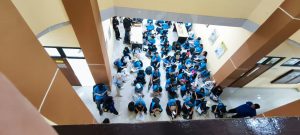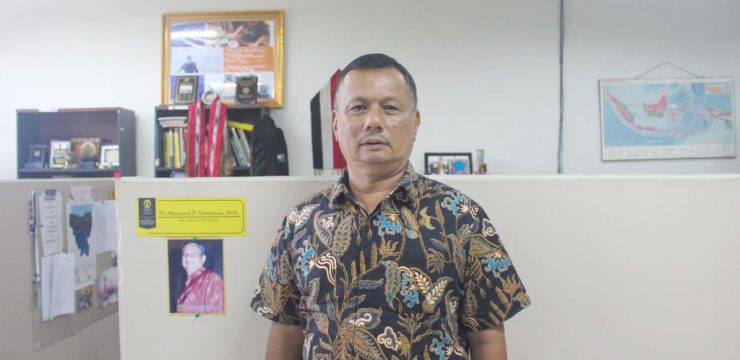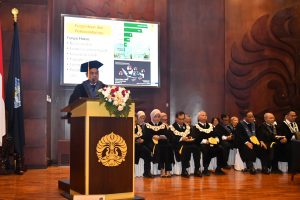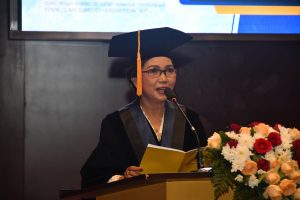The recent extreme weather has prompted the government to take several preventive and mitigation measures, one of which is the Weather Modification Technology (TMC) operation. Quoting from the official press release issued by the National Research and Innovation Agency (BRIN), TMC is not new to Indonesia. Since 1977, the project, which was previously better known as artificial rain, has been started. The idea emerged when President Soeharto saw that agriculture in Thailand was quite advanced. After observing, the advancement of Thai agriculture was due to the supply of agricultural water needs being assisted by weather modification.
Lecturer in the Department of Geography, Faculty of Mathematics and Natural Sciences, University of Indonesia (FMIPA UI) and expert in physical geography and the environment, Dr. Mangapul Parlindungan Tambunan M.Sc., said that the TMC operation is not far from its relationship with a technology from human interpretation in modifying natural weather. “The weather in an event can be temperature, wind, rain that is not widely covered. For example, in the River Basin Area (DAS) and in a very dynamic area related to time. If we talk about weather modification technology, for example the weather in Jakarta with a relatively short temporal time,” he said.
According to Dr. Mangapul, talking about weather modification means talking about the hydrological cycle in the atmosphere. “When clouds form, that’s where human interpretation occurs. When condensation occurs, that’s where the clouds are sown or sprinkled so that rain occurs in the space we want,” he said. He considered the usefulness and purpose of TMC operations to accelerate the process of rain occurring in the desired space.
He also revealed that the success of TMC is influenced by the direction and magnitude of the wind. However, the failure of TMC operations can occur with an estimate of more than 50% by looking at the wind acceleration. “The chance of engineering success is fifty-fifty to control TMC. The magnitude depends on the space,” he said again.
The way TMC operations work occurs with a chemical process. Dr. Mangapul said that after the salt was sown using an airplane that carried salt into the air and sowed it in a predetermined area, it was able to accelerate the movement of rain. "Meanwhile, the TMC operation was carried out by looking at cloud conditions. Before the rain occurs, it can be diverted to the desired space, such as at sea by looking at the calculation of the intensity of rain that will occur in a certain space," he said.
In addition to the Meteorology, Climatology, and Geophysics Agency (BMKG); National Research and Innovation Agency (BRIN); Indonesian Air Force; and other parties or agencies, scientists and academics need to be involved in accelerating the calculation of weather movements such as rain or extreme weather at this time. Dr. Mangapul said that the involvement and collaboration of various parties, namely government institutions, can be widely utilized for the community.
“Starting from the objectivity of natural science, research methods, field and institutional data, that is where collaboration between various parties is needed with the aim of building the nation. From BMKG providing weather forecast reports to the Department of Geography, FMIPA UI and then FMIPA UI submits research results and recommendations to the government. An example of institutional data, namely if each sub-district or village has wind and rain measuring instruments, both conventional and modern, such as the use of radar, makes it easier for BMKG to obtain weather-related data,” said Dr. Mangapul.
According to him, the negative impact of the TMC operation has not been found yet. “Because previously the TMC operation has been tested in several countries until it is currently used in Indonesia. The level of effectiveness of the TMC operation can be said to be 50% successful and 50% failed. This is very dependent on the wind (acceleration and magnitude),” he said.
“Weather is something we need to be grateful for. How we control weather phenomena to be friendly with the weather is by learning, understanding, and studying certain weather conditions so that it becomes an effort to prepare ourselves in facing extreme weather that occurs,” said Dr. Mangapul.
Water space, for example, watersheds must be utilized because watersheds play an important role in maintaining the environment and providing water needs for the community. Watershed management must be integrated from upstream to downstream, so that it will not cause disasters either in the upstream, middle, or downstream parts of the watershed.
He hopes that the community now also needs to know and pay attention to the biggest or dominant factor in extreme weather, namely anthropogenic. Anthropogenic are activities that produce pollution, such as factory waste, transportation pollution, illegal logging, expansion of oil palm plantations, and natural factors, namely from volcanoes. "Efforts that can be made to minimize this,
News source: https://sci.ui.ac.id/




